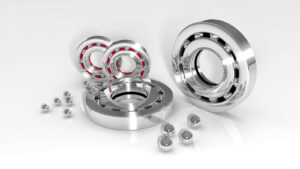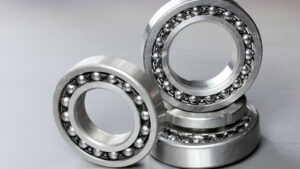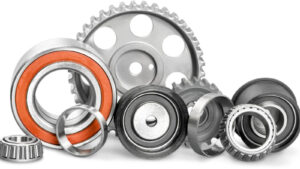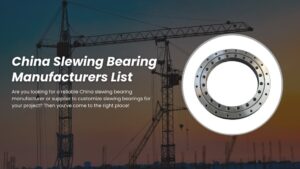In mechanical engineering and industrial applications, slewing bearings play a vital role in facilitating rotational motion between various components. These specialty bearings provide support, stability and smooth rotation in a wide range of applications from construction machinery and cranes to wind turbines and robotics.
Understanding the different types of slewing bearings available is critical to selecting the correct solution for specific operational requirements. In this article, we’ll explore the various types of slewing bearings, their unique capabilities.
1. Single-Row Slewing Bearings
These bearings employ a solitary row of balls or rollers, enabling them to adeptly handle axial, radial, and moment loads. Their versatility makes them suitable for various applications.
2. Double-Row Slewing Bearings
Possessing two rows of balls or rollers, double-row slewing bearings excel in load-bearing capacity, surpassing their single-row counterparts. They are ideal for demanding load requirements.
3. Three-Row Slewing Bearings
Specifically designed for heavy loads, three-row slewing bearings feature three rows of balls or rollers, ensuring enhanced load-carrying capability. They are a reliable choice for robust applications.
4. Cross-Roller Slewing Bearings
Crafted with crossed rollers arranged in a V-shaped configuration, cross-roller slewing bearings offer exceptional rigidity and facilitate smooth rotation with minimal friction. They guarantee reliable performance.
5. Ball Slewing Bearings
Employing balls as rolling elements, ball slewing bearings are a suitable option for applications demanding low friction, particularly in light-duty machinery. They provide efficient operation.
6. Roller Slewing Bearings
With cylindrical rollers as rolling elements, roller slewing bearings surpass ball slewing bearings in load-handling capability. They are ideal for applications requiring high load capacity.
7. Gear Slewing Bearings
Gear slewing bearings integrate either external or internal gears, enabling the transmission of torque and rotational motion. They are extensively utilized in precision-driven applications necessitating smooth rotation and accurate positioning.
8. Non-Gear Slewing Bearings
Unlike gear slewing bearings, non-gear variants forgo gears and are primarily used in applications where torque transmission is unnecessary. They serve specific purposes with efficiency.
9. Lightweight Slewing Bearings
Designed to minimize the overall weight of machinery or equipment without compromising load-carrying capacity, lightweight slewing bearings find common usage in industries such as aerospace and robotics.
10. Heavy-Duty Slewing Bearings
Tailor-made for withstanding exceptionally high loads, heavy-duty slewing bearings find application in heavy machinery like cranes, excavators, and wind turbines. They ensure reliable performance under rigorous conditions.
Choose the Right Slewing Ring for Your Application
There are several factors you must consider when selecting the proper slewing ring for your particular application. These factors include: load capacity, operating conditions, rotational speed, installation space and maintenance requirements.
Consulting with an experienced slewing bearing supplier can provide valuable insight and ensure you choose the most suitable type. Please contact us if you have a need for this.





